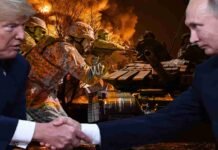Xi’s Fierce Response to US Trade Curbs Raises Global Tensions
Chinese President Xi Jinping’s sharp reaction to Donald Trump’s new trade restrictions has reignited global trade tensions. Following China’s sweeping export controls on products containing rare earth elements, Trump escalated by threatening to cancel their long-awaited meeting and announced 100% tariffs on Chinese imports. The move threatens to derail any chance of a renewed trade truce between the world’s two biggest economies.
Beijing defended its export curbs as a response to Washington’s growing list of restrictions. The Commerce Ministry stated that China’s actions were defensive, not aggressive, emphasizing its consistent position against trade wars. Experts say Beijing viewed the previous truce as an agreement to halt further curbs. Xi’s latest stance underlines China’s refusal to bow to unilateral US measures and signals readiness for economic retaliation if provoked.
Tariffs and Export Curbs at the Heart of the Standoff
The US-China confrontation now centers on technology exports and rare earth materials crucial for defense and AI industries. Trump’s earlier 145% tariffs pushed Xi to restrict US access to vital magnets, disrupting supply chains. Analysts warn that further tariff hikes could trigger another blockade, intensifying economic pain for both sides. The escalating conflict reflects deep-rooted strategic mistrust beyond simple trade competition.
Despite fiery exchanges, both nations have left space for negotiation. Trump’s new tariffs are scheduled for November 1, just after his expected meeting with Xi at a South Korea summit. China’s restrictions will follow a week later. Economists suggest these timelines give both leaders an opportunity to recalibrate and seek a limited compromise that could prevent further economic fallout.
TikTok Deal and Global Supply Chains in Jeopardy
The widening rift also threatens ongoing negotiations involving Chinese investments and the TikTok deal in the US. Washington’s strict national security laws could block any major capital inflow, worsening tensions. Analysts at CF40 argue that Trump faces political limits ahead of the 2026 midterm elections, making it harder for him to sustain economic disruption as inflation and shortages continue to pressure US voters.
Also Read: Why Trump Imposed a Sudden 100% Tariff on China
Chinese exports have remained strong in several markets, cushioning the blow from US actions. Upcoming data is expected to show factory growth accelerating again, offering Xi some breathing space. However, sustained high tariffs could still hurt an economy already facing weak domestic demand and deflationary risks. The unfolding trade crisis highlights how deeply interdependent the two nations remain despite political rivalry.
Financial markets tumbled as investors feared a deeper rupture in global trade. US stocks saw their sharpest decline in six months, while commodities like copper, wheat, and soybeans dropped. Economists warn that a prolonged standoff could push the global economy toward partial decoupling. Both governments, however, may ultimately be forced back to the table to avoid long-term damage to their industries and currencies.
Xi’s Rare Earth Leverage Forces Strategic Rethink
Earlier this year, China used its rare earth dominance to push Washington into easing chip export curbs. Analysts believe Xi’s team could pursue similar leverage in upcoming talks. Former Global Times editor Hu Xijin described the current standoff as a turning point, noting that China now wields its mineral strength to push back against what it views as US overreach in trade and technology.





